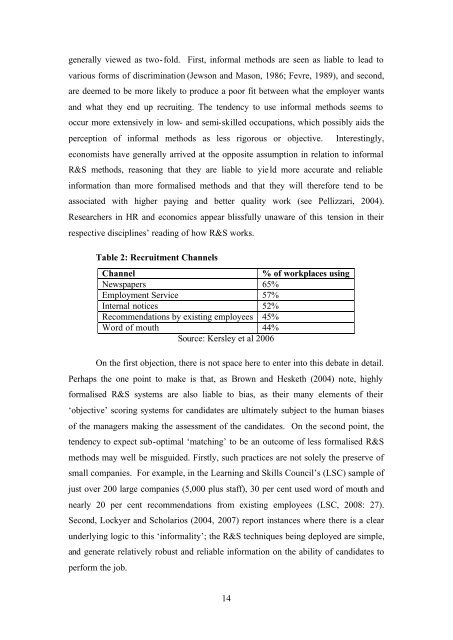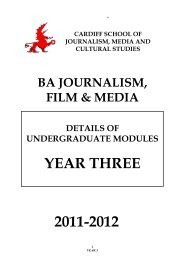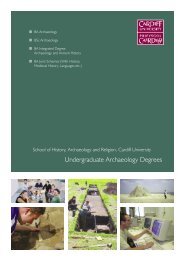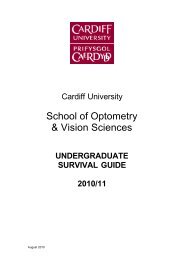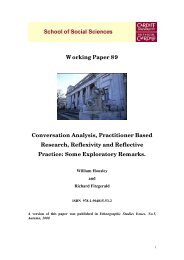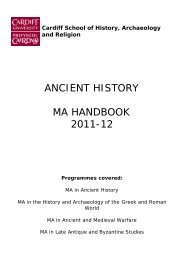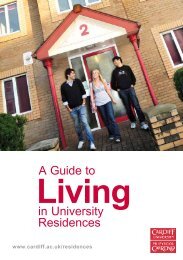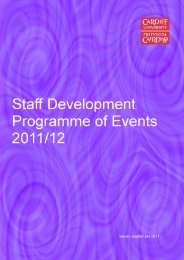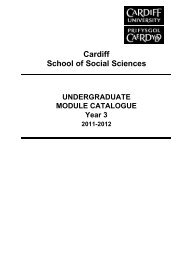Recruitment and Selection â the Great Neglected ... - Cardiff University
Recruitment and Selection â the Great Neglected ... - Cardiff University
Recruitment and Selection â the Great Neglected ... - Cardiff University
You also want an ePaper? Increase the reach of your titles
YUMPU automatically turns print PDFs into web optimized ePapers that Google loves.
generally viewed as two-fold. First, informal methods are seen as liable to lead to<br />
various forms of discrimination (Jewson <strong>and</strong> Mason, 1986; Fevre, 1989), <strong>and</strong> second,<br />
are deemed to be more likely to produce a poor fit between what <strong>the</strong> employer wants<br />
<strong>and</strong> what <strong>the</strong>y end up recruiting. The tendency to use informal methods seems to<br />
occur more extensively in low- <strong>and</strong> semi-skilled occupations, which possibly aids <strong>the</strong><br />
perception of informal methods as less rigorous or objective. Interestingly,<br />
economists have generally arrived at <strong>the</strong> opposite assumption in relation to informal<br />
R&S methods, reasoning that <strong>the</strong>y are liable to yield more accurate <strong>and</strong> reliable<br />
information than more formalised methods <strong>and</strong> that <strong>the</strong>y will <strong>the</strong>refore tend to be<br />
associated with higher paying <strong>and</strong> better quality work (see Pellizzari, 2004).<br />
Researchers in HR <strong>and</strong> economics appear blissfully unaware of this tension in <strong>the</strong>ir<br />
respective disciplines’ reading of how R&S works.<br />
Table 2: <strong>Recruitment</strong> Channels<br />
Channel<br />
% of workplaces using<br />
Newspapers 65%<br />
Employment Service 57%<br />
Internal notices 52%<br />
Recommendations by existing employees 45%<br />
Word of mouth 44%<br />
Source: Kersley et al 2006<br />
On <strong>the</strong> first objection, <strong>the</strong>re is not space here to enter into this debate in detail.<br />
Perhaps <strong>the</strong> one point to make is that, as Brown <strong>and</strong> Hesketh (2004) note, highly<br />
formalised R&S systems are also liable to bias, as <strong>the</strong>ir many elements of <strong>the</strong>ir<br />
‘objective’ scoring systems for c<strong>and</strong>idates are ultimately subject to <strong>the</strong> human biases<br />
of <strong>the</strong> managers making <strong>the</strong> assessment of <strong>the</strong> c<strong>and</strong>idates. On <strong>the</strong> second point, <strong>the</strong><br />
tendency to expect sub-optimal ‘matching’ to be an outcome of less formalised R&S<br />
methods may well be misguided. Firstly, such practices are not solely <strong>the</strong> preserve of<br />
small companies. For example, in <strong>the</strong> Learning <strong>and</strong> Skills Council’s (LSC) sample of<br />
just over 200 large companies (5,000 plus staff), 30 per cent used word of mouth <strong>and</strong><br />
nearly 20 per cent recommendations from existing employees (LSC, 2008: 27).<br />
Second, Lockyer <strong>and</strong> Scholarios (2004, 2007) report instances where <strong>the</strong>re is a clear<br />
underlying logic to this ‘informality’; <strong>the</strong> R&S techniques being deployed are simple,<br />
<strong>and</strong> generate relatively robust <strong>and</strong> reliable information on <strong>the</strong> ability of c<strong>and</strong>idates to<br />
perform <strong>the</strong> job.<br />
14


